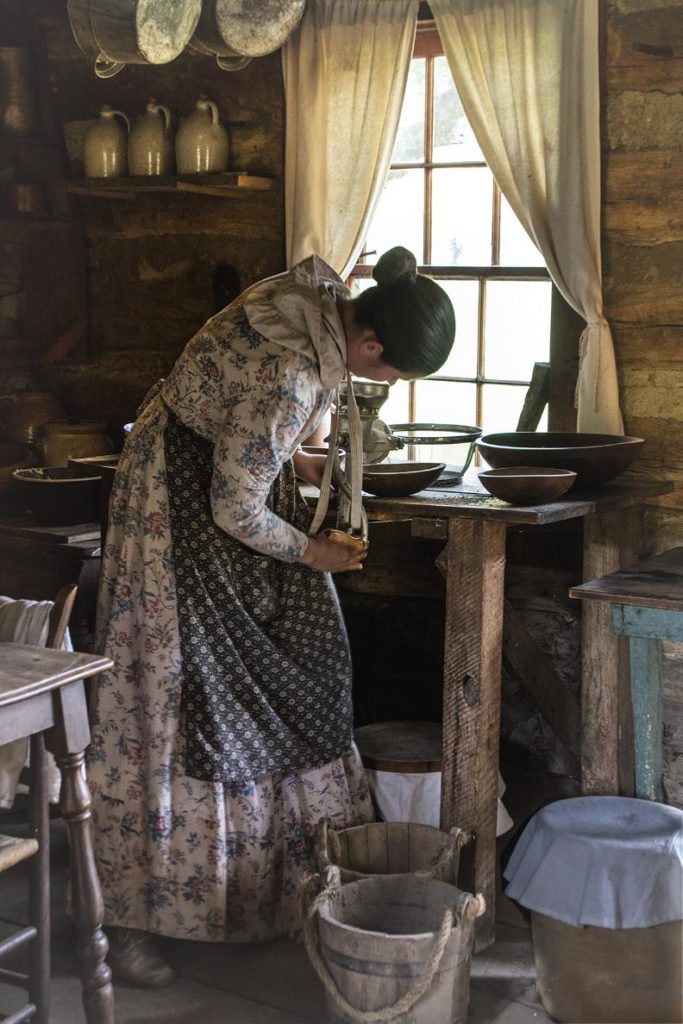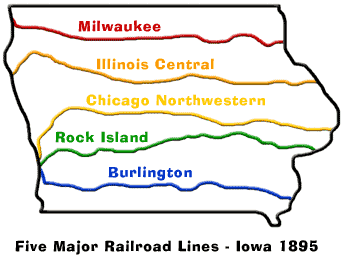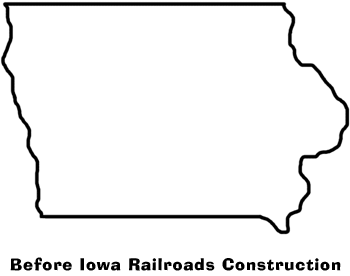Many pioneers who settled in Iowa came from states to the east. They came in large numbers from Ohio, Indiana, Illinois and New York.
What attracted pioneer settlers to migrate to Iowa?
Historians tell us about push/pull factors. There were forces that helped to push settlers west. That is, there were reasons why pioneers wanted to leave the east and move to new lands in the west.
Historians also believe there were factors that helped pull settlers west. There were reasons why moving west sounded better to the pioneer settler than staying in the east.
Pioneer settlers were sometimes pushed west because they couldn't find good jobs that paid enough. Others had trouble finding land to farm.
With more and more people from Europe moving into the eastern states, crowding was sometimes a problem. Still others wanted to move from their homes in the east because they didn't like the new industries and the developing cities.
Pioneer settlers were sometimes pulled west because they wanted to make a better living. Others received letters from friends or family members who had moved west. These letters often told about a good life on the frontier.
The biggest factor that pulled pioneers west was the opportunity to buy land. Pioneers could purchase land for a small price compared to what it cost in states to the east.
Pioneer settlers traveling to Iowa used many different kinds of transportation.
One man, named William Buxton, settled in Carlisle, Iowa in 1851. In 1853, he traveled back to England to claim an inheritance. While on his return trip to Iowa he kept a journal telling of his travels.The Journal of William Buxton gives specific details about how he traveled.
Read the journal. Make a list of all the ways William Buxton traveled. How many did you find?

Transportation in Iowa changed very rapidly during the 19th century. The first settlers arrived by wagon often pulled by oxen. Later, settlers might travel by wagon, steamboat or stagecoach.
In 1853, at the end of William Buxton's trip from England he traveled by stagecoach from Dubuque to Carlisle, Iowa. Twenty years later he would have taken a train.
Railroad lines were constructed in eastern Iowa during the 1850s. By 1895, there were five major railroad companies operating in Iowa.

But these railroad lines weren't laid all at once. Railroads gradually began in the 1850s.

The development of railroads in Iowa changed the state permanently.
It was said that by 1900 there was no location in the state more than 8 miles from a railroad station.
Pioneer settlers moved into Iowa and established farms.
As more and more settlers came towns began to develop. Pioneer farmers wanted to get and send mail. They wanted to buy products such as cloth, tools, and special food items.
At first, towns were located only in eastern Iowa. Later as railroads connected the whole state, towns could be found from east to west and north to south. By 1870, Iowa was dotted with towns.
The men and women who settled the frontier faced many hardships.
Women on the frontier sometimes worked side by side with men in the hard farm work. Women often helped with the harvest and on the frontier they would know how to drive a team of horses.
In addition, women made clothing, sewed quilts, cooked the food for the family and tended large gardens.
John and Sarah Kenyon settled in eastern Iowa in 1856. They wrote many letters to their relatives back in Rhode Island. They told about what it was like to farm in the new state of Iowa.
One of their letters described a problem that many pioneer farmers feared - ![]() .
.
Read more about prairie fires.

Grant Wood was a famous American artist. The subject of many of his paintings was farm life in pioneer times and the early 1900s.
American Gothic and Stone City were two of his most famous paintings. His inspiration for this work came from a small frame house in the town of Eldon, Iowa. This house had interesting windows in its gables that were "gothic" in their design.
"Gothic" windows were pointed at the top and looked like an up-side-down pitchfork. A hundred years ago, this gothic design was often used when designing homes, public buildings and even tombstones.
In addition to the gothic window, notice how the pitchfork in the farmer's hand is also important to the design of the painting.
Actually, Grant Wood "hid" a lot of pitchforks in his paintings.
Check out The Story of American Gothic for an interpretation of the artwork that includes comments about the pitchfork in the painting.
Read what Grant Wood said about this painting.
Many people have used this painting as a starting point for greeting cards, magazine covers and political cartoons.
View what other students have created and this student museum, and create your own version of American Gothic.
American Gothic Transformations

Copyright © 2022 CampSilos | All Rights Reserved
National Standards | Silos & Smokestacks | Credits | Awards
Crafted by IFC Studios, a midwest Branding Agency.